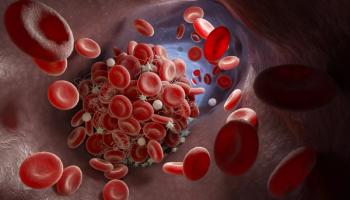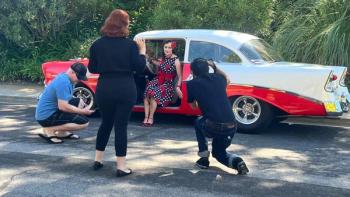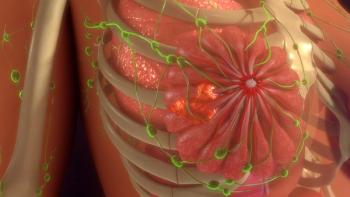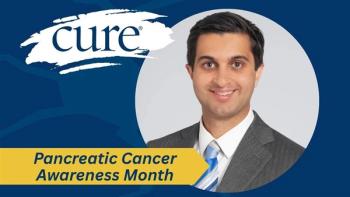
Irrational Cancer: Nothing About This Disease Makes Sense
I kept picking at these possibilities, grasping for reasons why cancer was happening to me rather than someone else.
Today I poked at my brain. Well, first I watched the doctor poke at my brain on the computer screen.
“This isn’t pretty,” he said, pointing to a mysterious grey blotch nestled deep within the folds of my meninges. “See this area here? That’s new growth since your last scan.”
The digital scan alone was insufficient for the doctors to determine what the invading agent was. At first, he thought it was something benign that had been there since I was born. But now that we could witness its growth, the terrifying possibility that the leukemia had spread to my brain began to emerge.
All my medical records now bore the word “urgent” printed in red ink. I sat there in shock, staring at the screen, wondering how this could be possible. “Fighting cancer is like fighting Mike Tyson,” my oncologist used to say. “Once we’ve got him on the ropes, don’t let up. Crush him under your feet before he can resurge.”
And crush it we did. Within the last three months alone, I have had three lumbar punctures, all of which required me to lie on my side at the edge of the narrow hospital bed, curled into a fetal position with a pillow between my knees. The doctor would then stab my lower back with a stainless-steel needle to inject chemotherapy drugs into my spinal canal. This was a gut-wrenching procedure that left me with a dull, agonizing headache for weeks. And yet, I grimly bore it, believing it was the cost of keeping the cancer at bay.
I wouldn’t pretend to be a stoic Spartan, plowing through this with a grin and a giggle. I worried. I cried. My mind raced at night, wondering if I would make it to another Christmas. Nothing about this made sense, I thought to myself. We took every conceivable precaution, bombarding the disease with every weapon in the arsenal.
So how, despite all our overkill measures, did it still manage to turn feral and spread? Was it my diet that made the cancer aggressive? Maybe I hadn’t exercised or de-stressed enough to bolster my immune system. Or perhaps it was the air quality; ugh, I really shouldn’t have moved to New York.
I kept picking at these possibilities, grasping for reasons why this was happening to me rather than someone else. Isn’t that what we humans do: incessantly search for patterns, for narratives, for some greater significance in the randomness of existence? Lying on the grass, we gaze up at the drifting clouds and suddenly the leftmost one takes on the shape of a dolphin. We can make out the curved nose, the sleek body, and even the little tail fluke. It feels so real that you half expect it to whistle at you before dissipating back into cottony vapors.
Just like how we see familiar faces in the clouds or detect shapes among the scattered stars, we conjure up overly simplistic narratives to explain away the illogical misfortunes that befall us and others. It’s a coping mechanism of sorts, a way to rationalize the absurd and find comfort in the unknown. At the end of the day, the idea that the universe follows a fair and logical chain of causes and effects seems much more attractive than the alternative.
Unfortunately, there’s no rationale behind cancer. On my better days, you can’t even tell if there’s anything wrong just by looking at me. When steroids don’t disrupt my sleep schedule, when my pain is under control, when I feel strong enough to walk to the bathroom or open up my laptop and type these words, I almost feel like a reasonably healthy 20-year-old.
Passing me down the street, you would notice my brown waistcoat, Ray-Ban sunglasses and the winter blue beanie hat from Old Navy, which did its best to conceal the thinning hair on the back of my head. That was another college student, you might think, as, of course, there’re so many in this downtown area.
Never would you have guessed that I was ill, or that I had dropped out of college a year ago to get treatment, or that I had just been pumped full of reddish chemical from a bag with a skull and crossbones emblem through a grafted plastic tube — a tube that had three bulbous lumens, a tube that protruded from beneath my collarbone and threaded its way into my heart’s veins.
It’s easy to forget that everyone is fighting their own onerous battles. Behind each indistinguishable face is a universe of lives, dreams, fears, heartbreaks and struggles that are invisible to the outside world. We put on our bravest faces and carry ourselves with as much flair and courage as we can muster. Hidden in plain sight, we’re all valiant warriors at heart.
This post was written and submitted Chaipat Tirapongprasert. The article reflects the views of Tirapongprasert and not of CURE®. This is also not supposed to be intended as medical advice.
For more news on cancer updates, research and education, don’t forget to





